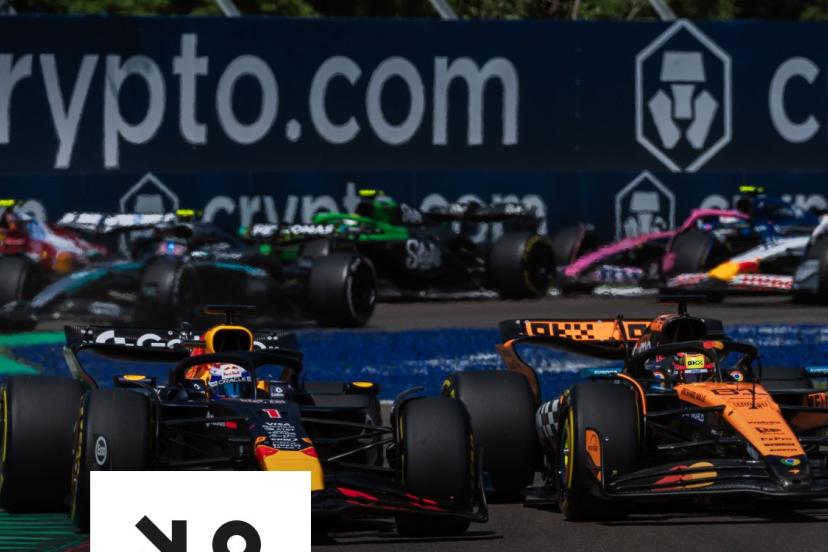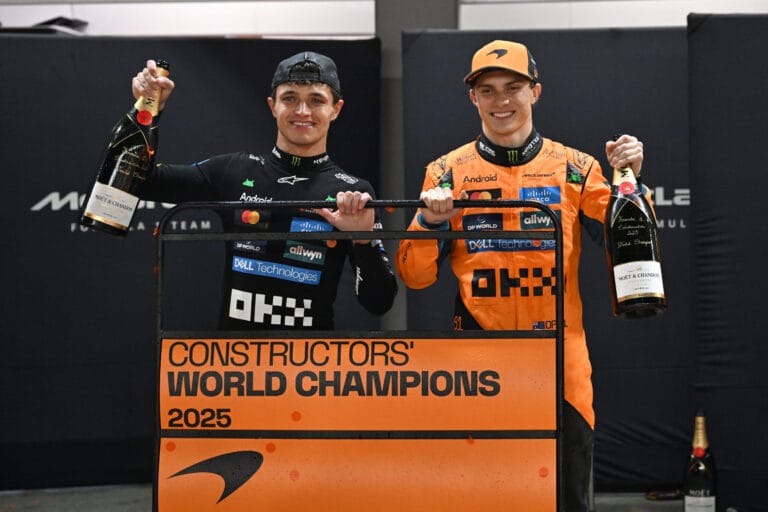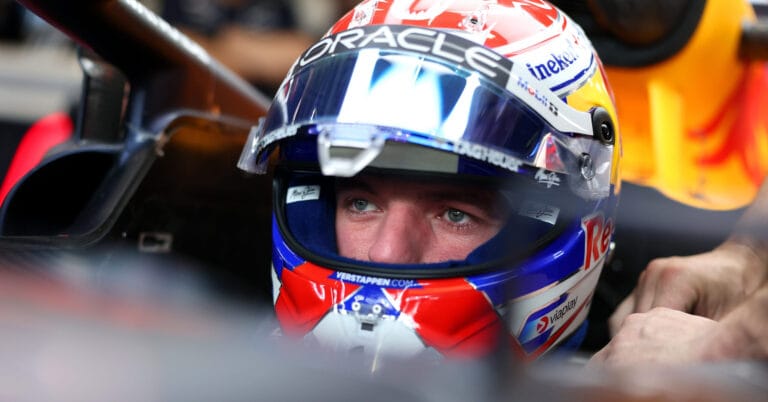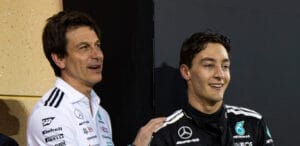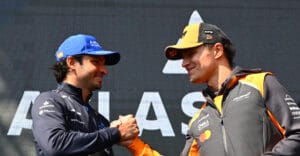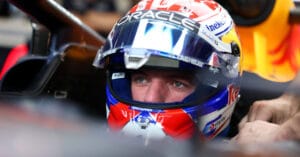To execute his overtaking move on Oscar Piastri at the start of the Emilia-Romagna Grand Prix, Max Verstappen performed a maneuver of incredible finesse. Assisted by the circumstances, the Red Bull driver was able to execute a braking maneuver of incredible precision, which analysis shows was… longer than that of the Australian! Here’s the explanation.
The legendary overtaking of Max Verstappen on Oscar Piastri at the start of the Emilia-Romagna Grand Prix at Imola will remain one of the highlights of the 2025 season.
The maneuver, which also reignites the World Drivers’ Championship, was made possible by several factors, from the good start of… George Russell to the perfectly modulated braking of Verstappen. Here are the four main elements.
1. Piastri Pressured by Russell
At the extinguishing of the red lights, Oscar Piastri and Max Verstappen start exactly the same way with accelerations as linear as each other. In fact, it’s the third man, George Russell, who got off to the best start. He went from 0 to 200 km/h in 4.86 seconds, where the Australian poleman needed 5.04 seconds. Thanks to this, the Englishman even overtook Verstappen for a few moments, but he was blocked. Telemetry even shows that he had to slightly release the accelerator (between 80 and 90% of the pedal on the second half of the straight) to avoid hitting the McLaren.
Having made an excellent start, Russell, seen here from the onboard camera, temporarily overtakes Verstappen and sticks to Piastri. The latter is forced to block him, thereby leaving the door open on the outside for the Dutchman.
In front of him, Piastri, seeing that Verstappen is not faster than him and that Russell is catching up, decides to stay completely inside to block the Mercedes. In doing so, he wants to avoid suffering the same misfortune as Hamilton against… Verstappen in 2021. The Dutchman had then infiltrated inside before braking Hamilton at Tamburello, “pushing” him off the track and flying towards victory.
2. Too Much “Free Wheeling” Time for Piastri
Completely blocked by his two opponents, Russell is the first to brake as he approaches the chicane, abandoning any idea of gaining positions. Thus, a duel between Piastri and Max Verstappen for first place remains. During the press conference, the Championship leader will estimate that he braked too early. However, listening to the engine on the onboard camera and reading the telemetry, it appears that Piastri mainly had a small latency between the moment he released the accelerator and when he started to brake. About 4 tenths of a second. This represents a little over 30 meters at this speed. Perhaps an excess of caution due to the fact that he is not on the usual trajectory at that moment.
On his part, Verstappen, then on the right trajectory, instantly lit his brakes the moment he released the accelerator, the transition taking less than half a tenth of a second. On the point of braking itself, however, the two drivers on the front row essentially chose the same one, just before the 100-meter sign.
Verstappen’s Victory Revives the Title Race
3. Verstappen, a “long” and controlled braking
From the outside, it would be easy to deduce that Verstappen was the one who braked the latest, the hardest, and therefore the shortest time. But surprisingly, the Dutchman braked over a much longer distance than Piastri. The latter released the left pedal before reaching the apex of the first turn, between 10 and 15 meters. Verstappen, on the other hand, continued to press the pedal until he had passed the apex.
However, the telemetry available to the public has a significant limitation on the study of braking. It simply binary states whether a driver is braking or not, never indicating the force of the braking, unlike the detailed acceleration to the nearest percent. The evolution of the instantaneous speed difference and the longitudinal deceleration of the two single-seaters show the different ways in which Piastri and Verstappen modulated their braking, the latter slowing down less strongly but for a longer time.
“At this moment, Piastri has just stopped braking, but not Verstappen, who remains faster at this stage. The front wheel of the four-time world champion has just reached the level of the Australian’s, and the Red Bull continues to gain ground.
The art of Verstappen was to brake in a way that decelerated him less than his opponent while maintaining 100% of the directional control of his front axle to take the turn. His left foot’s ability to feel the pedal and the car could be compared to the “touch” of a tennis player at the net or a footballer controlling a difficult ball. Without this velvet braking, the Red Bull driver would have ended his race in the vast gravel trap to the right of the track. Shortly after, the four-time world champion will add a final key little brake, just before turn 3 to ensure he maintains total control of his car and takes the corner well.
4. Piastri in a Position of Weakness, Concedes the Following Turn
Max Verstappen is one of the drivers who knows the rules of overtaking best. The goal of his entire maneuver was “simple”: to be just ahead of Piastri when reaching the apex of turn 3, on the right, thus placing him on the inside. Once this is achieved, he knows that according to the current interpretation of the rules, the turn is “his”. He also knows that precedent shows a race direction and stewards much more lenient with first lap maneuvers than others. He therefore has almost complete latitude to exit this turn as he wishes against Piastri.
With Verstappen in front of him on the inside, Piastri is trapped and forced to brake to negotiate turn 3, letting his opponent race ahead.
Piastri is just as aware of the situation. At no point does the Australian force things. Once put in a position of weakness, he will give a little brake to ensure he does not damage his front wing and can exit turn 3 without sliding two wheels into the gravel trap on the outside. He thus ensures to maintain, at that moment, the second place, avoiding a mishap like the one suffered by his teammate Lando Norris, who lost several places after insisting too much against Verstappen in the first turns at Miami.
Mixed Feelings at Ferrari’s Home
“


